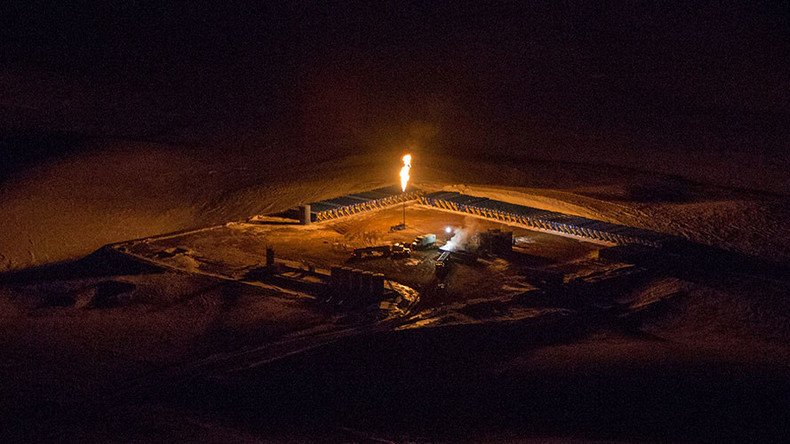Bakken Formation responsible for 2 percent of global ethane emissions – study

While presidential candidates in the US debate the existence of global climate change, a single oil field could be responsible for much of it. The University of Michigan found that the Bakken Formation contributes 250,000 tons of ethane per year according to a new study.
The Bakken Formation emits roughly 2 percent of the globe’s ethane. That may not sound like much, but it could be the cause of the dramatic spike in atmospheric levels of ethane seen in the past decade.
"Two percent might not sound like a lot, but the emissions we observed in this single region are 10 to 100 times larger than reported in inventories. They directly impact air quality across North America. And they're sufficient to explain much of the global shift in ethane concentrations," first author of the study Eric Kort, U-M assistant professor of climate and space sciences and engineering, explained.
Despite environmental concerns, North Dakota approves largest capacity crude oil pipelinehttps://t.co/HoHtKlTq0Cpic.twitter.com/INYZ8uEDkP
— RT America (@RT_America) January 21, 2016
The risk of increasing ethane levels is serious. The hydrocarbon can react with sunlight and other molecules to create surface-level ozone, one of the main pollutants used by the Air Quality Index to issue warnings about potential breathing problems outside for long periods of time, the University of Michigan News reported. The gas is also known as a “greenhouse gas,” or a gas that traps heat in the atmosphere, according to the Environmental Protection Agency.
Between 1984 and 2009, ethane levels were decreasing across the globe. However, just a year later, researchers in Europe found that they were increasing – and have been ever since. It was initially hypothesized that the US natural gas industry could have played a role in the ethane increase. They investigated in 2014 by sampling air from above the Bakken Formation for 12 days in a row. The results from their investigation found that the Bakken Formation emitted 250,000 tons of ethane annually, which negated half of the decline rate.
Colm Sweeney, co–author and scientist with the Cooperative Institute for Research in Environmental Sciences at the University of Colorado Boulder and NOAA, told the University of Michigan News, "These findings not only solve an atmospheric mystery – where that extra ethane was coming from – they also help us understand how regional activities sometimes have global impacts.”
Climate change on trial in case of Delta 5 oil train protesters https://t.co/I2vOGBpbKApic.twitter.com/9pWhIzyvME
— RT America (@RT_America) January 12, 2016












